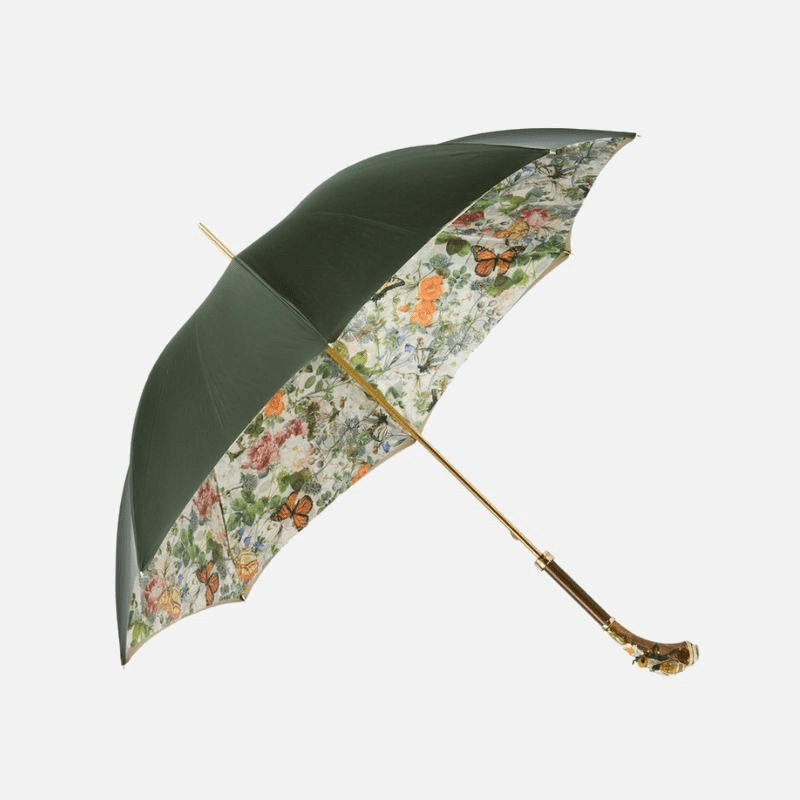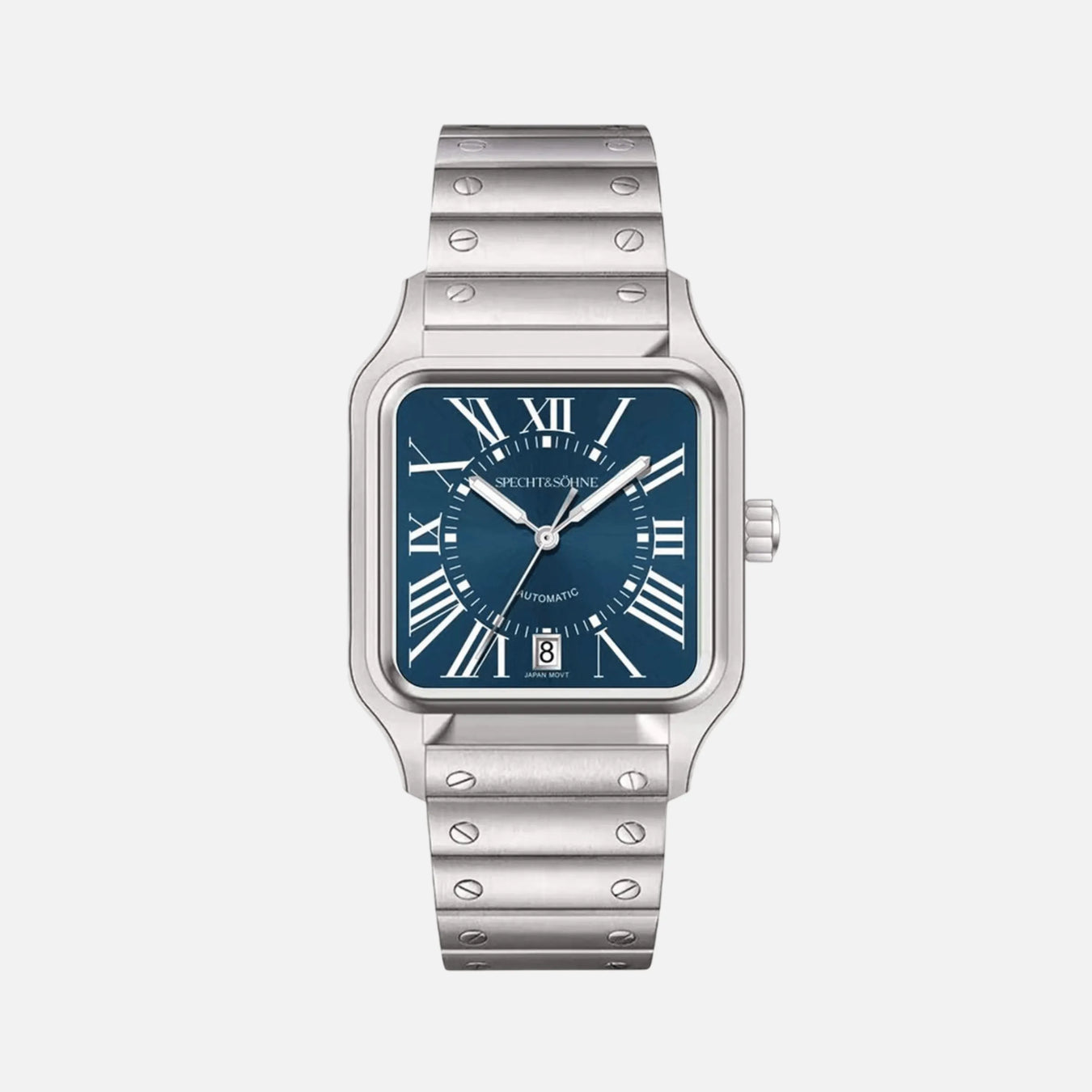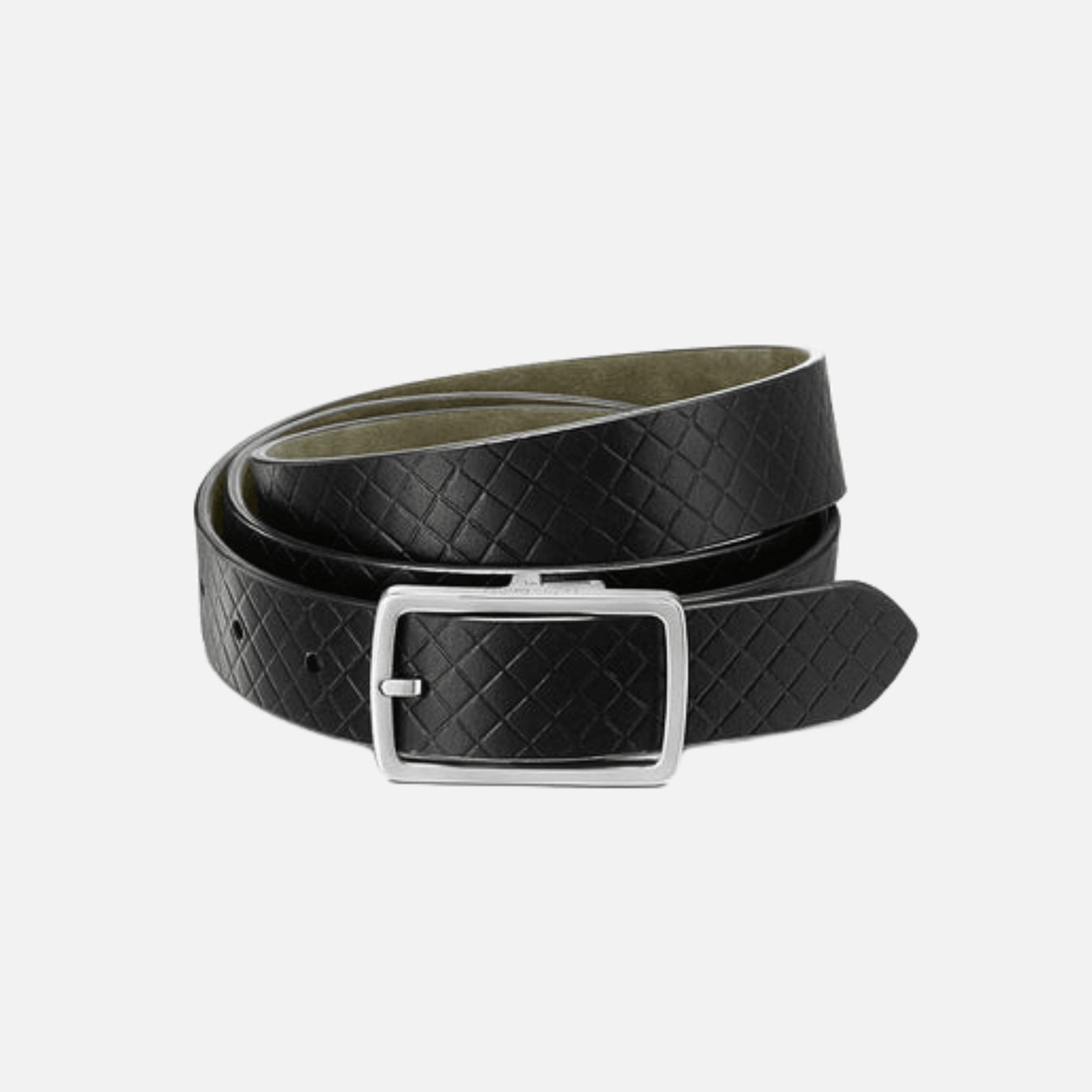
5 Modern Design Trends in Walking Canes for Enhanced Mobility
Here's an overview:
-
Customization and Personalization: Expressing Individuality Through Design
-
Fashion-Forward Aesthetics: The Rise of Designer Walking Canes
-
Safety Features: Incorporating Reflective and Non-slip Elements
Introduction: The Evolution of Walking Canes
Walking canes have been a symbol of wisdom, dignity, and aid for mobility for generations. Their origin dates back to ancient times when they were used primarily as tools for self-defense and emblems of power and status. However, their transformation into devices designed to support individuals with mobility challenges marks a significant evolution.
In the 17th and 18th centuries, walking sticks were often seen as fashionable accessories for the gentry. They were intricately designed and crafted from expensive materials to serve as a testament to the wealth and sophistication of their owners. As the years progressed, their use as a support for people with impaired mobility became more prominent, and their design started to reflect this functional requirement.
The 19th century brought about further adaptations as canes became more widely used for medical purposes. During this period, the focus shifted towards practicality and comfort, and the features of the walking cane were modified to improve the user's experience. Ergonomically shaped handles, adjustable heights, and foldability are a few examples of the advancements made to suit different needs and lifestyles.
In the 20th century, technological advancements played a major role in the further development of walking canes. Materials such as aluminum and carbon fiber were incorporated to reduce weight without compromising strength. Additionally, a variety of specialized grips, bases, and added features like built-in lights or storage were introduced to accommodate various disabilities and improve safety.
The contemporary design trends in walking canes take cues from both the functional improvements of the past and the aesthetic sensibilities of the present. Current models not only address mobility challenges but also reflect the individual style and preferences of the user, providing an intersection of tradition and modern innovation.
Ergonomic Handles: Combining Comfort with Style
In the world of mobility aids, the marriage of ergonomics and aesthetics represents a significant trend in the design of modern walking canes. Designers have recognized that a cane is not only an assistive device but also an extension of personal style. As such, they have ingeniously integrated ergonomic handles that bring comfort to the user while simultaneously exuding sophistication and elegance.
-
Customized Grip Design: The traditional T-shaped or rounded handles are being supplemented and even replaced with contours that naturally fit the human grip. These handles are sculpted based on average hand sizes, considering finger and palm placement. This alleviates stress on the user's joints, reducing the risk of strain or arthritis aggravation.
-
Advanced Materials: Gone are the days when handles were solely crafted from wood or basic plastics. Designers now employ a variety of materials like soft silicone, rubberized grips, and even memory foam that conform to the individual's grip. This personalized touch offers both ease and flair.
-
Weight Distribution: To minimize fatigue and enhance balance, top-tier walking canes are designed to distribute weight evenly across the handle. This improvement in weight management means that users can walk longer distances with reduced effort.
-
Aesthetic Integration: While prioritizing comfort, these handles are far from clinical in appearance. They come in a myriad of designs, some featuring intricate patterns, bold colors, or sleek, minimalist lines. The handles are not just about usability; they complement the user's style, acting as a fashion statement as much as a walking aid.
-
Sustainable Options: With a nod towards environmental consciousness, some manufacturers are offering handles made from sustainable materials like bamboo or recycled plastics. Users can now choose canes that are kinder to the planet while still promoting personal comfort and style.
In embracing ergonomic handles, the modern walking cane transcends its utilitarian beginnings. It becomes a seamless blend of functionality and fashion, catering to the discerning needs of users who value both comfort and personal expression.
Adjustable and Foldable Designs: Mobility on the Go
With the emphasis on convenience and adaptability in our fast-paced world, walking canes have evolved to prioritize portability and customization. Designers have introduced a variety of adjustable and foldable walking canes that cater to the dynamic needs of users who are always on the move.
-
Adjustability is a key feature in modern walking canes, allowing users to alter the height of the cane to suit their personal comfort and posture requirements. This is particularly beneficial for individuals who may experience changes in their mobility needs or for those who wear different types of shoes with varying heel heights. The adjustability is typically achieved through a push-button mechanism or a telescoping design that is both user-friendly and secure.
-
Foldability is another aspect that enhances mobility, with walking canes designed to collapse into a compact size easily carried in handbags, backpacks, or suitcases. This feature is perfect for those who travel frequently or simply wish to have their cane readily available without it being a cumbersome accessory. Foldable walking canes are equipped with reliable locking systems to ensure they remain sturdy when in use and effortlessly collapse when not needed.
In catering to an active lifestyle, manufacturers have also prioritized the overall weight reduction of these canes. Lightweight materials such as aluminum and carbon fiber not only make the canes easy to carry but also ensure they are strong enough to provide the necessary support.
Moreover, ergonomic designs with T-shaped or contour grips have been incorporated to offer better hand comfort and reduce strain during prolonged use. This intersection of functionality and design demonstrates an understanding that mobility aids must be as flexible and adaptive as the lives of the people who use them.
Smart Canes: Technology Meets Traditional Mobility Aids
In the realm of walking canes, the integration of technology has given rise to smart canes, a revolutionary trend that marries the classic walking aid with sophisticated features aimed at enhancing the independence and safety of users with mobility challenges. These modern devices come equipped with a host of smart capabilities:
-
Navigation Assistance: Some smart canes include built-in GPS systems that help users navigate their surroundings. These GPS-enabled canes can alert users to upcoming terrain changes or obstacles, ensuring safer travel.
-
Fall Detection: Advanced gyroscopes and accelerometers are now embedded in smart canes to detect unusual movements or angles that may indicate a fall, promptly alerting the user or their caregivers through connected devices.
-
Emergency Services: In case of an emergency, smart canes may feature an SOS button that, when pressed, sends a signal to emergency contacts or services along with the user’s location.
-
Connectivity Features: By syncing with smartphones via Bluetooth, these canes can offer additional functionalities, from remote monitoring by loved ones to receiving weather updates or navigation prompts through audio feedback.
-
Obstacle Warning Systems: Using ultrasonic sensors, smart canes can detect obstacles in the user's path, vibrating or emitting sound cues to warn the user.
-
Customizable Grips and Pads: Ensuring comfort, some smart canes have adjustable grips and are paired with apps that analyze walking patterns to suggest ergonomic adjustments for optimal support.
-
LED Lighting: For increased visibility, LED lights are a common feature, providing illumination on dark pathways and signaling the user's presence to others.
These smart canes are a testament to how design innovation can significantly enhance the functionality of traditional mobility aids, offering unprecedented support and confidence to their users.
Lightweight Materials: Ease of Use for Everyday Activities
The incorporation of lightweight materials in the design of walking canes has significantly enhanced their functionality and user-friendliness. Modern canes are often constructed from advanced composites and alloys that reduce the overall weight without compromising strength. Such materials may include:
-
Aluminum: Known for its durable yet lightweight properties, aluminum is a popular choice for mobility aids.
-
Carbon Fiber: This material offers an exceptional strength-to-weight ratio. Carbon fiber canes are remarkably light but sturdy enough to support substantial weight.
-
Fiberglass: A lighter alternative to traditional materials, fiberglass provides good flexibility and durability.
These advancements benefit users in several practical ways:
-
Reduced Fatigue: Lightweight canes alleviate the strain on the user’s wrist, arm, and shoulder, minimizing the risk of fatigue during extended use.
-
Increased Portability: The ease of carrying a lightweight cane promotes independence, as users are more likely to take their mobility aid everywhere they go.
-
Greater Control: A lighter cane provides the user with better control and maneuverability, enhancing safety and confidence while traversing various terrains.
-
Easy Storage: Being lightweight makes these canes easier to store when not in use, whether it is hooking them onto a chair or sliding them into a storage space.
Manufacturers also focus on the balance and grip, which are critical for the cane's practicality. Ergonomic handles coupled with lightweight shafts ensure that canes are comfortable to hold for long periods and reduce the risk of slipping or losing grip.
By blending lightweight materials with enhanced design features, modern walking canes are tailor-made to function as an extension of the user's body. Such designs consider the diverse needs and preferences of individuals to ensure that their mobile aid is not just a tool, but a seamless support in their daily lives.
Customization and Personalization: Expressing Individuality Through Design
In an era where tailored experiences are highly coveted, walking canes have become more than mobility aids; they're a means for self-expression and personal style. The modern user demands a cane that is not only functional but also aligns with their personal identity and aesthetic preferences.
-
Material Diversity: Innovative materials such as carbon fiber provide a sleek, contemporary look while reducing the cane's weight. Wood canes offer classic elegance with the opportunity to choose from different wood types and finishes, allowing users to match their cane to their wardrobe or lifestyle.
-
Adjustable Features: Some canes come with adjustable heights and interchangeable ferrules—rubber tips at the bottom—to suit various environments, from urban walks to nature trails. These features ensure that the cane is not just a support tool but also a reflection of the owner's versatility and adaptability.
-
Artisanal Craftsmanship: Custom-made canes are akin to pieces of art. Artisans can incorporate unique designs, from elaborate patterns to custom carvings, that cater to the individual’s taste. This level of craftsmanship turns the cane into a personal statement piece.
-
Color and Pattern Options: Bold colors and striking patterns are available for those looking to make a statement. From vibrant solids to subtle hues, and from paisley to modern geometric designs, the variety allows individuals to select a cane that resonates with their personality.
-
Ergonomic Designs with a Twist: Ergonomically shaped handles are prioritized for comfort, yet designers also focus on the aesthetic appeal. Handles can be crafted to mimic the look of animal heads, sculptural forms, or futuristic motifs. This blend of comfort and style is indicative of how functionality and fashion can coalesce in mobility products.
Walking canes are no longer just about utility. They represent the users' unique stories and preferences, and today's design trends reflect this intersection of practicality and individuality. Customization and personalization are integral to the modern approach to mobility aids, emphasizing that limitation doesn't spell an end to self-expression.
Multi-function Canes: From Stools to Umbrellas
Walking canes have significantly evolved, embracing the concept of multifunctionality to cater to diverse user needs. Modern canes are no longer just aids for walking but are equipped with innovative features that enhance convenience and utility.
-
Cane-stool Combo: One such design integrates a collapsible stool with the walking cane. Individuals who require frequent rests due to fatigue or medical conditions can benefit immensely from this feature. The stools are designed to be lightweight yet sturdy, ensuring they can be used safely on various terrains.
-
Cane with Built-in Umbrellas: Another innovative trend is the integration of umbrellas into the cane. This design provides users with instant protection from sudden rain or shade from harsh sunlight. The implementation is seamless, with the umbrella component easily retractable into the body of the cane when not in use.
-
Adjustable-length Canes: Innovation in the walking cane industry also includes adjustable-length canes that serve multiple purposes. At one length, it may function as a standard walking aid, and when extended, it can double as a monopod stand for cameras or mobile devices, appealing to the more tech-savvy users who wish to stabilize their devices while on the go.
-
Cane with LED Lights: For added safety, some modern canes come equipped with LED lights. These lights provide visibility during nighttime walks, ensuring users can see and be seen in low-light conditions. They can also be angled to illuminate paths or read menus in dimly lit restaurants.
-
Gadget-friendly Canes: Designers have recognized the importance of staying connected, and as a result, some walking sticks now feature USB ports for charging smartphones or other electronic devices.
These multi-functional canes reflect a growing trend where mobility devices are tailored to suit the lifestyle demands of modern users. They not only offer support for mobility but also bring a new level of convenience and independence to daily life.
Eco-Friendly Materials: Sustainable Options in Walking Aids
In recent years, there has been a significant shift towards sustainability in various industries, and mobility aids such as walking canes are no exception. Design advancements have embraced eco-friendly materials that not only reduce environmental impact but also maintain, if not improve, the functionality and aesthetic appeal of walking aids. Below are some sustainable options that have emerged in the modern design of walking canes:
-
Bamboo: Often favored for its rapid growth and biodegradability, bamboo has become a popular choice for walking canes. It is lightweight yet sturdy, offering a balance between ease of use and strength that is essential for a reliable walking aid.
-
Recycled Metals: Aluminum and other metals can be recycled and used in the construction of walking canes. The use of recycled metals helps conserve resources and reduces the carbon footprint associated with the production of new materials.
-
Plant-Based Plastics: Bioplastics derived from renewable resources such as corn starch or sugarcane are being incorporated into walking cane designs. These materials are biodegradable and present a significant reduction in environmental impact compared to conventional plastics.
-
Sustainably Sourced Wood: For those who prefer traditional wood canes, sustainably sourced timber from managed forests ensures minimal environmental disruption. Woods like ash, hazel, and blackthorn are selected based on sustainability credentials and are handcrafted into elegant walking canes.
-
Cork Handles: Cork is a renewable material harvested from the bark of cork oak trees without harming the tree itself. Durable and comfortable to grip, cork handles are an excellent eco-friendly alternative to rubber or plastic.
These eco-friendly materials are a testament to the evolving landscape of walking aids, where functionality, design, and environmental consciousness are all given priority. Choosing a walking cane made from sustainable materials can contribute to a greener future while providing the necessary support for enhanced mobility.
Fashion-Forward Aesthetics: The Rise of Designer Walking Canes
Walking canes have transcended their traditional role as mere mobility aids and have become a statement of personal style and fashion consciousness. The rise of designer walking canes reflects an increased desire for individuality and self-expression in every aspect of life, including the tools used for assistance with walking.
-
Integration with Personal Style: Designer canes are crafted to complement the user's personal style. From sleek, contemporary lines to vintage-inspired designs, there is a walking cane to match every wardrobe and occasion.
-
Material Innovation: These stylized canes are often made from high-end materials like carbon fiber, exotic woods, or even custom metals, offering both robust functionality and visual appeal.
-
Customization Options: They frequently come with customization options, allowing for the selection of handle designs, cane lengths, and decorative details. This ensures a perfect match with the user’s height, grip preference, and fashion sense.
-
Collaborations: High-profile collaborations between established fashion designers and cane manufacturers are on the rise, introducing haute couture into the world of mobility aids.
-
Influence on Market Trends: As high-end canes gain popularity, they influence the broader market. Traditional cane manufacturers are now incorporating more style-focused elements into their designs to meet the demand for fashion-forward mobility aids.
The merge of aesthetic appeal with functional design is reshaping the public perception of walking canes. No longer are they seen solely as medical devices but also as an extension of personal style. Designer walking canes reaffirm that function and fashion can walk hand in hand, offering users the opportunity to make a personal statement while maintaining their independence.
Safety Features: Incorporating Reflective and Non-slip Elements
The design of walking canes is evolving with safety as a paramount concern. Modern walking canes now incorporate a range of features to ensure user stability, visibility, and confidence. Reflective elements have become increasingly integral to walking cane design. These features provide visibility in low-light conditions, making the user more conspicuous to motorists and pedestrians alike. This is particularly beneficial during twilight hours or in poorly-lit environments.
Furthermore, the adoption of non-slip elements is enhancing cane stability, an essential aspect for users navigating various terrains and conditions. Non-slip rubber tips are standard, offering strong grip on surfaces such as wet pavement, which reduces the risk of slipping. Some designs extend non-slip features to the handle, ensuring a secure grip even for users with limited hand strength or dexterity issues.
To offer an optimal balance between grip and comfort, ergonomic handles with anti-slip properties are designed with materials such as foam or soft rubber. These provide a cushioned hold, reducing hand strain over extended use. Additionally, innovative canes have bases with a wider footprint, often incorporating pivoting or flexing tips that maintain contact with the ground during the cane's full range of motion. This adaptability to different angles enhances stability on uneven surfaces.
For users requiring additional security, especially in hazardous weather conditions, some modern canes are fitted with ice tips. These small, retractable spikes can be deployed to penetrate ice or snow, significantly reducing the chance of a fall.
These advancements reflect a comprehensive approach to safety, merging practical design with innovative materials to ensure walking canes not only support mobility but actively contribute to the well-being of their users.
Cane Accessories: Expanding Utility with Attachments
Walking canes have long been a staple for individuals needing support for mobility. However, modern design trends are enhancing cane functionality with ingenious accessories that cater to the diverse needs of users. These accessories not only improve the foundational use of the walking cane but also bring additional utility that can enhance the quality of life for the user.
-
Ice Grips: A crucial accessory for those living in colder climates, ice grips can be attached to the base of a cane to prevent slippage on icy and snowy surfaces. This attachment can be pivotal in preventing falls during winter months.
-
Cane Tips: Various tips can be added to a cane's base for different terrains and stability requirements. These may include broad, non-skid rubber tips for general use, or pivoting tripod or quad tips for increased stability and support.
-
LED Lights: Some canes come with the option to add LED lights to illuminate the path ahead. This feature is particularly helpful during evening walks or in dimly-lit environments, ensuring users can see and be seen.
-
Wrist Straps: To prevent the cane from slipping out of hand, wrist straps can be an effortless accessory that adds security. It also allows users to free up their hands when necessary without placing the cane down.
-
Folding Mechanisms: For ease of transportation, canes with folding capabilities can be fitted with specialized mechanisms to make them compact. This feature is ideal for users who travel frequently or need to store the cane in a small space.
-
Attachment Clips: Clips can allow the user to attach the cane to shopping carts, chairs, or tables, ensuring the cane is always within reach and not a tripping hazard when not in use.
These accessories improve practicality and promote independence and safety for cane users. Manufacturers continue to innovate with attachments that address the evolving lifestyle and health needs of their clientele.
Conclusion: Embracing Innovation in Walking Cane Design
In the quest to enhance mobility and improve quality of life for individuals with walking challenges, the domain of walking cane design has witnessed a significant transformation. Contemporary designers and innovators, in response to the diverse needs of users, have pivoted towards creating walking canes that offer a blend of functionality, comfort, and aesthetic appeal.
Today's walking canes are no longer mere mobility aids but have evolved into sophisticated devices that incorporate advanced technologies, ergonomic features, and customizable components. They stand as testaments to how thoughtful design can profoundly impact everyday living. From smart canes equipped with navigation assistance technology to elegantly crafted pieces that make style statements, the design trends are varied and cater to a broad audience.
To embrace innovation in walking cane design is to recognize that:
-
The needs of cane users are as individual as the users themselves, demanding personalized solutions.
-
Ergonomic designs can significantly reduce discomfort and prevent further injury.
-
Innovative materials can offer durability without sacrificing weight or style.
-
Technology integration can transform a simple cane into a multifunctional device, enhancing safety and independence.
-
Aesthetics play a critical role in user acceptance and confidence, driving the creation of designs that users are proud to own and use in public.
In the era of rapid technological advancements, it's imperative to continually explore and integrate new ideas into walking cane designs. This commitment to innovation does not only push the boundaries of what is possible but also ensures that the changing needs of individuals are met with solutions that enable them to navigate the world with ease, dignity, and a touch of personal flair. Embracing innovation signifies a step forward into a future where mobility aids are not just supportive but also empowering.






